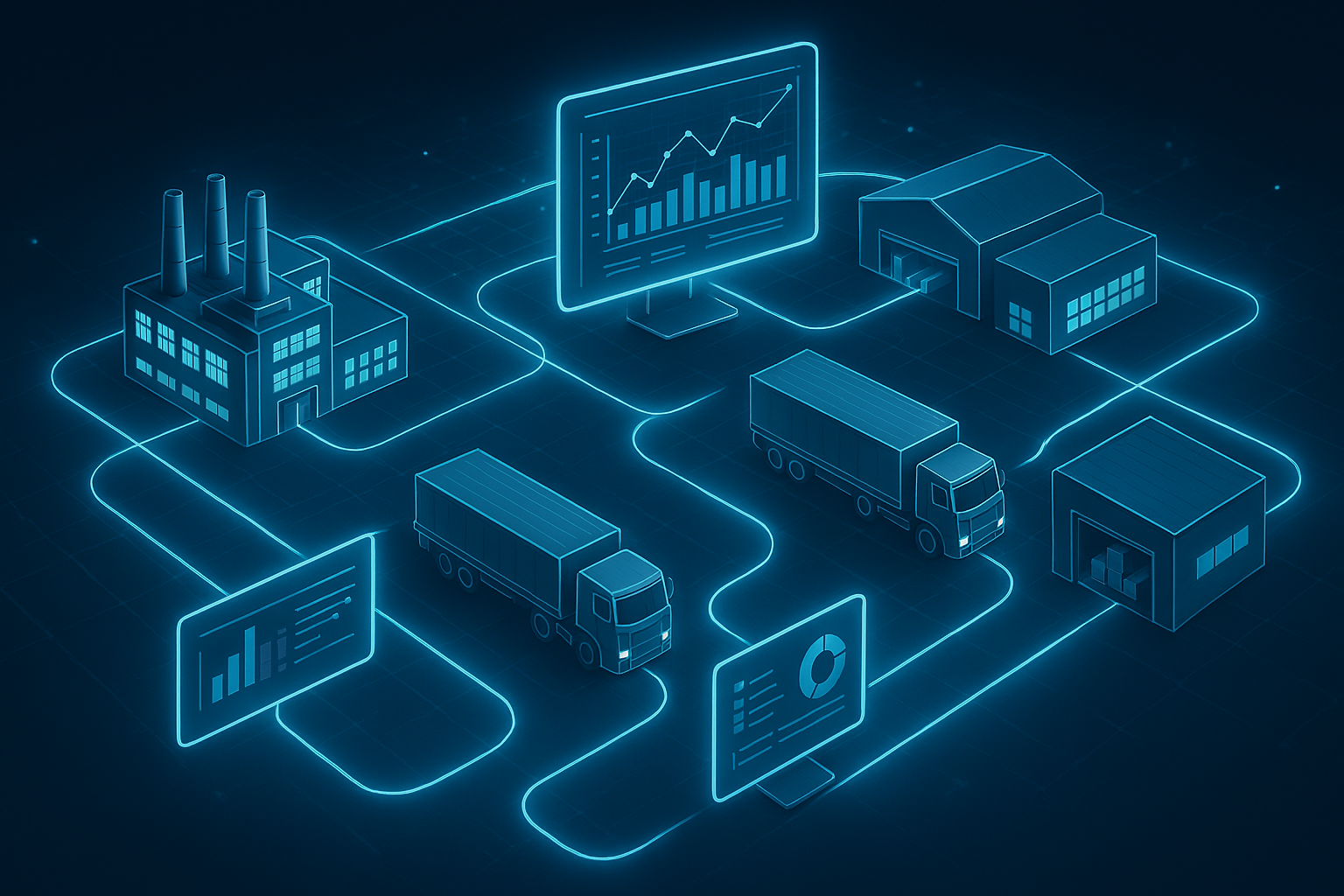Digital Supply Chains: The Future of Business Transformation
Introduction
In today’s fast-paced global economy, businesses face increasing pressure to deliver products faster, cheaper, and more efficiently. Traditional supply chain models, once considered sufficient, can no longer keep up with market demands. This is where digital supply chains come into play. By integrating advanced technologies such as artificial intelligence, data analytics, cloud computing, and IoT, companies can gain real-time insights, improve decision-making, and enhance customer satisfaction.
Digital supply chains are not just an upgrade but a transformation that reshapes how goods and services move across industries. In this article, we will explore their benefits, technologies, and strategies for businesses that want to stay competitive.
What Are Digital Supply Chains?
A digital supply chain is the evolution of the traditional supply chain model. It leverages digital tools and technologies to streamline the flow of goods, services, and information. Unlike traditional supply chains that often rely on manual processes and limited visibility, digital supply chains enable real-time data sharing, automation, and predictive insights.
Key features include:
- Data-driven decision-making powered by analytics.
- End-to-end visibility across suppliers, logistics, and customers.
- Automation of repetitive tasks to reduce errors and delays.
- Flexibility to adapt quickly to market disruptions.
Benefits of Digital Supply Chains
1. Improved Visibility and Transparency
One of the greatest challenges in traditional supply chains is lack of visibility. Digital supply chains provide real-time tracking of shipments, inventory, and supplier performance. This allows businesses to anticipate problems before they escalate.
2. Greater Efficiency and Cost Reduction
Automation, predictive analytics, and AI-driven demand forecasting minimize waste and optimize resources. This reduces operating costs and improves profitability.
3. Enhanced Customer Experience
Digital supply chains ensure timely deliveries, accurate order tracking, and personalized services. As customer expectations rise, these improvements become essential for retaining loyalty.
4. Resilience in Times of Disruption
Global crises like pandemics and geopolitical tensions highlight the need for resilient supply chains. Digital supply chains empower businesses to adapt quickly by simulating scenarios, finding alternative suppliers, and rerouting logistics.
5. Sustainability and Compliance
By analyzing data in real time, businesses can minimize carbon footprints, reduce waste, and comply with environmental regulations. This is increasingly important as customers and regulators demand responsible practices.
Key Technologies Driving Digital Supply Chains
Artificial Intelligence and Machine Learning
AI helps forecast demand, detect anomalies, and recommend process improvements. Machine learning algorithms can predict supply chain risks and suggest proactive actions.
Internet of Things (IoT)
IoT devices such as sensors and RFID tags track goods throughout their journey. They provide critical data about location, condition, and performance in real time.
Cloud Computing
Cloud platforms make it easier for stakeholders to share data, collaborate, and access information from anywhere. This ensures agility and scalability.
Blockchain Technology
Blockchain creates secure, tamper-proof records of transactions, ensuring authenticity and transparency across the supply chain.
Advanced Analytics and Big Data
Analytics tools help businesses process massive amounts of data to uncover trends, identify inefficiencies, and improve operations.
Strategies for Implementing Digital Supply Chains
- Assess Current Capabilities
Before transitioning, businesses should evaluate existing supply chain processes and identify areas for digital transformation. - Invest in Scalable Technology
Adopt tools and platforms that can grow with business needs, avoiding costly replacements in the future. - Integrate Data Across Systems
Ensure that data from suppliers, logistics providers, and internal systems is unified and accessible for better decision-making. - Prioritize Cybersecurity
As more supply chain data moves online, cybersecurity becomes critical to protect sensitive information. - Train and Upskill Workforce
Employees should be equipped with the skills needed to operate digital tools and adapt to new workflows.
Challenges in Adopting Digital Supply Chains
While the advantages are significant, businesses may face challenges such as:
- High initial investment costs.
- Integration difficulties with legacy systems.
- Resistance to change from employees.
- Data security and privacy concerns.
Addressing these issues requires a clear roadmap, leadership support, and ongoing training.
The Future of Digital Supply Chains
Looking ahead, digital supply chains will continue to evolve with emerging technologies. Artificial intelligence will become more predictive, blockchain adoption will grow, and sustainability will become a stronger focus. Businesses that embrace digital transformation now will be better positioned to thrive in competitive global markets.
Conclusion
Digital supply chains represent the future of business operations. They offer enhanced visibility, efficiency, and resilience, while also meeting customer expectations and sustainability goals. Companies that invest in these systems will gain a strategic advantage over competitors still reliant on traditional models.
By combining technology, data, and strategy, digital supply chains create an ecosystem where businesses can adapt, grow, and succeed in an ever-changing global economy.




Comments are closed